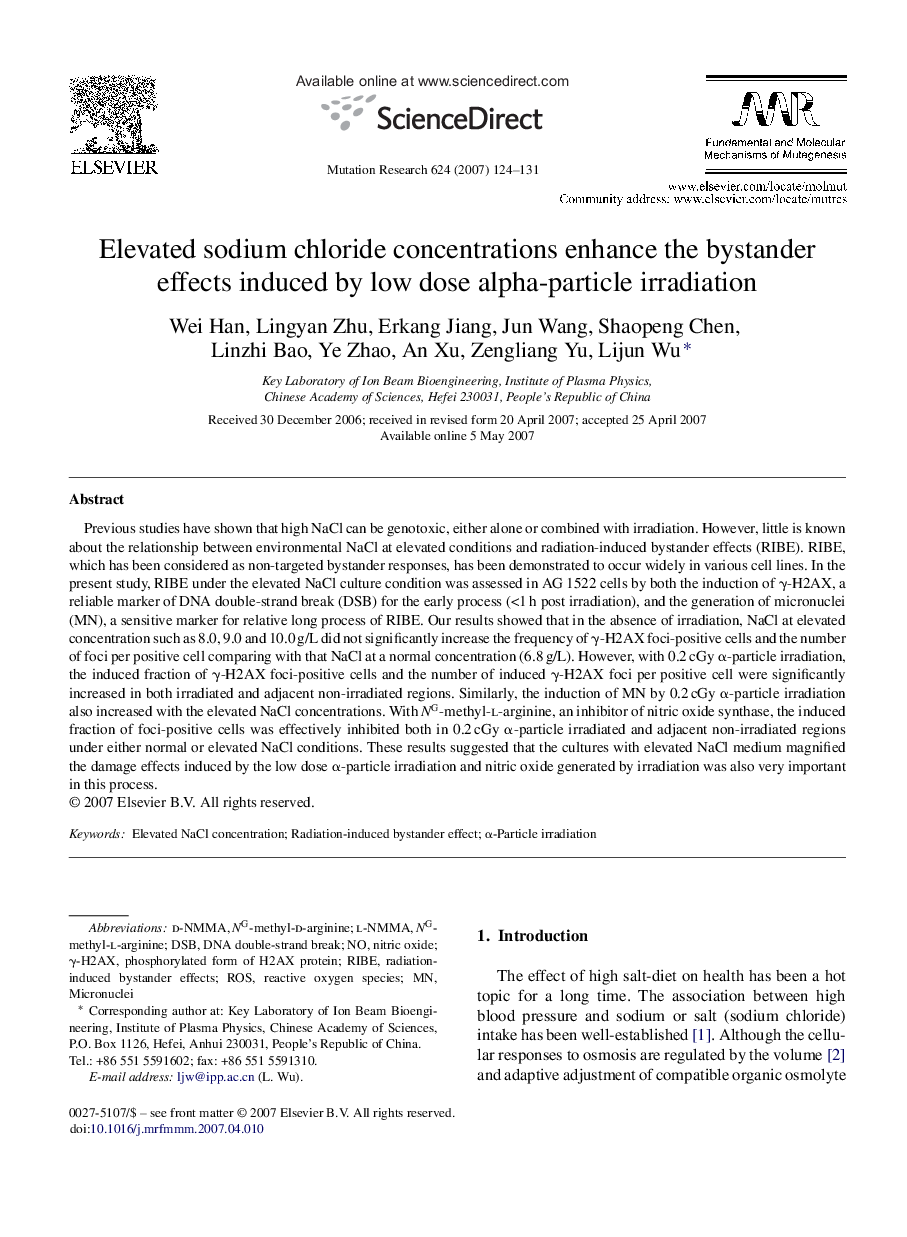| Article ID | Journal | Published Year | Pages | File Type |
|---|---|---|---|---|
| 2147328 | Mutation Research/Fundamental and Molecular Mechanisms of Mutagenesis | 2007 | 8 Pages |
Previous studies have shown that high NaCl can be genotoxic, either alone or combined with irradiation. However, little is known about the relationship between environmental NaCl at elevated conditions and radiation-induced bystander effects (RIBE). RIBE, which has been considered as non-targeted bystander responses, has been demonstrated to occur widely in various cell lines. In the present study, RIBE under the elevated NaCl culture condition was assessed in AG 1522 cells by both the induction of γ-H2AX, a reliable marker of DNA double-strand break (DSB) for the early process (<1 h post irradiation), and the generation of micronuclei (MN), a sensitive marker for relative long process of RIBE. Our results showed that in the absence of irradiation, NaCl at elevated concentration such as 8.0, 9.0 and 10.0 g/L did not significantly increase the frequency of γ-H2AX foci-positive cells and the number of foci per positive cell comparing with that NaCl at a normal concentration (6.8 g/L). However, with 0.2 cGy α-particle irradiation, the induced fraction of γ-H2AX foci-positive cells and the number of induced γ-H2AX foci per positive cell were significantly increased in both irradiated and adjacent non-irradiated regions. Similarly, the induction of MN by 0.2 cGy α-particle irradiation also increased with the elevated NaCl concentrations. With NG-methyl-l-arginine, an inhibitor of nitric oxide synthase, the induced fraction of foci-positive cells was effectively inhibited both in 0.2 cGy α-particle irradiated and adjacent non-irradiated regions under either normal or elevated NaCl conditions. These results suggested that the cultures with elevated NaCl medium magnified the damage effects induced by the low dose α-particle irradiation and nitric oxide generated by irradiation was also very important in this process.
